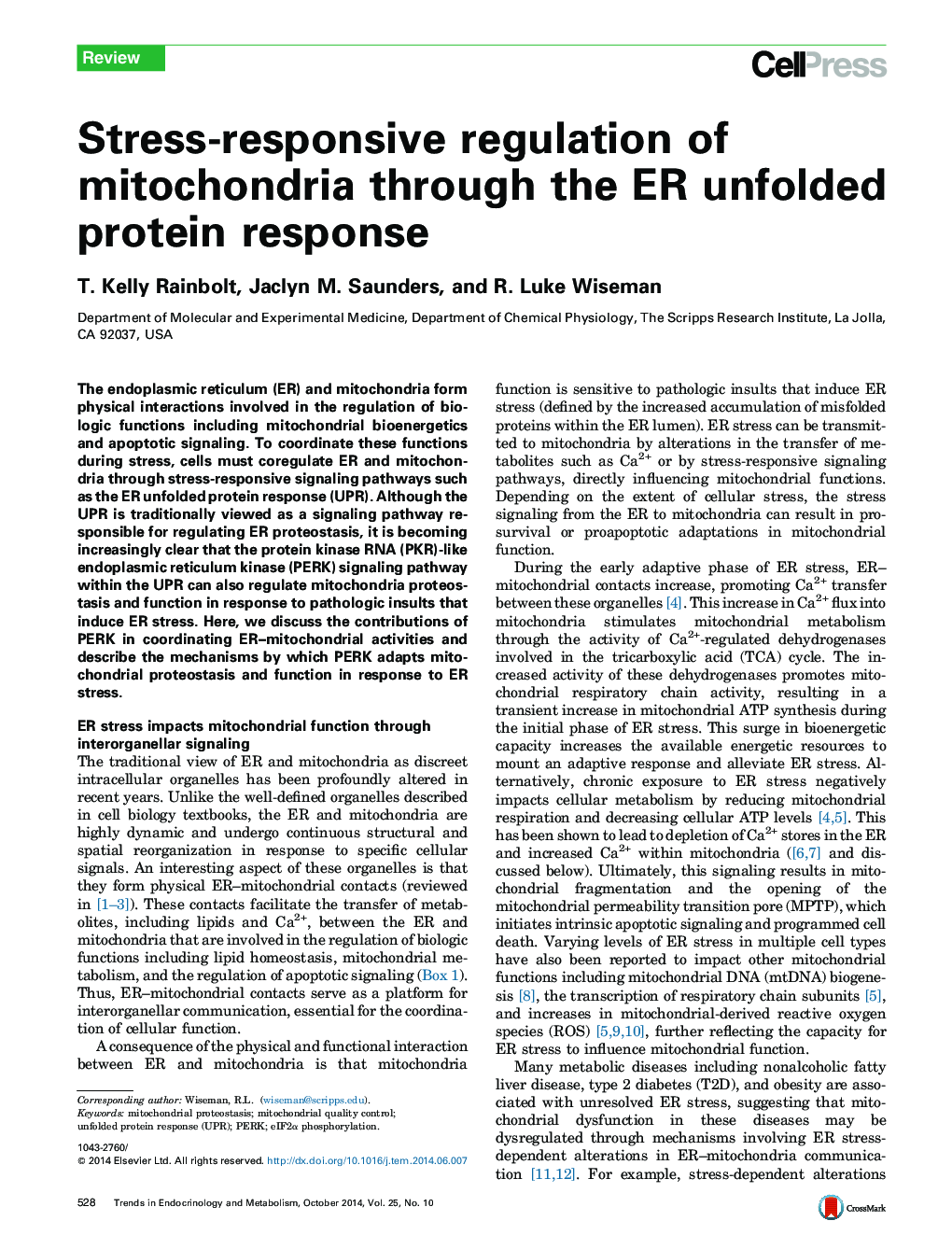| Article ID | Journal | Published Year | Pages | File Type |
|---|---|---|---|---|
| 2810215 | Trends in Endocrinology & Metabolism | 2014 | 10 Pages |
•ER–mitochondrial contacts sensitize mitochondria function to ER stress.•PERK stabilizes ER–mitochondrial contacts to promote mitochondrial function and metabolism.•PERK activation adapts mitochondrial quality control pathways.•PERK signaling regulates mitochondrial apoptotic signaling pathways.
The endoplasmic reticulum (ER) and mitochondria form physical interactions involved in the regulation of biologic functions including mitochondrial bioenergetics and apoptotic signaling. To coordinate these functions during stress, cells must coregulate ER and mitochondria through stress-responsive signaling pathways such as the ER unfolded protein response (UPR). Although the UPR is traditionally viewed as a signaling pathway responsible for regulating ER proteostasis, it is becoming increasingly clear that the protein kinase RNA (PKR)-like endoplasmic reticulum kinase (PERK) signaling pathway within the UPR can also regulate mitochondria proteostasis and function in response to pathologic insults that induce ER stress. Here, we discuss the contributions of PERK in coordinating ER–mitochondrial activities and describe the mechanisms by which PERK adapts mitochondrial proteostasis and function in response to ER stress.
